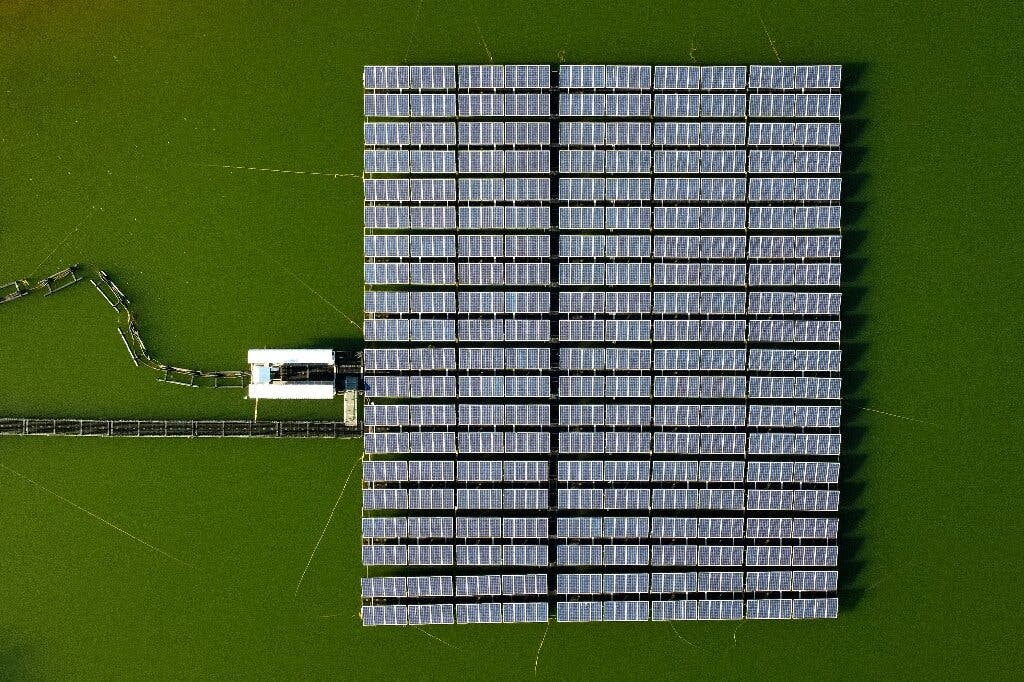The Kingdom of Thailand wants to seal its commitment to green energy with its new hybrid solar-hydropower generation facility that covers a water reservoir in the northeast of the country.

The installation covers an immense 720,000 square meters of the reservoir’s surface and produces clean electricity around the clock: solar power during the day, hydropower at night. Christened the Sirindhorn dam farm, this is the “world’s largest floating hydro-solar farm”, and the first of 15 such farms planned to be built by Thailand by 2037. They are a linchpin in the kingdom’s pledge for carbon neutrality by 2050.
Floating towards the future
“We can claim that through 45 megawatts combined with hydropower and energy management system for solar and hydro powers, this is the first and biggest project in the world,” Electricity Generating Authority of Thailand (EGAT) deputy governor Prasertsak Cherngchawano told AFP.
At the 2021 United Nations Climate Change Conference (COP26) last year, Thailand’s Prime Minister Prayut Chan-O-Cha officially announced his country’s goal of reaching carbon neutrality by 2050, and a net-zero greenhouse emissions target by 2065. Thailand also aims to produce 30% of its energy from renewables by 2037 as an interim goal.
The Sirindhorn dam farm project, which went into operation last October, is the cornerstone of that pledge. The farm contains over 144,000 solar cells and can output 45 MW of electricity. This is enough to reduce Thailand’s carbon dioxide emissions by an estimated 47,000 tons per year.
Thailand’s energy grids continue to rely heavily on fossil fuel; some 55% of the country’s power generation as of October last year was derived from such fuels, while only 11% came from renewable sources such as solar or hydropower, according to Thailand’s Energy Policy and Planning Office, a department of the ministry of energy. Still, projects such as Sirindhorn show that progress is being made.
The $35 million project took two years to build, with repeated delays caused by the pandemic, which saw technicians falling sick and deliveries of solar panels being repeatedly delayed. EGAT plans to install floating hydro-solar farms in 15 more dams across Thailand by 2037, which would total an estimated 2,725 MW of power.
Currently, power generated at Sirindhorn is being distributed mainly to domestic and commercial users in the lower northeastern region of the country.
Thailand is also betting that its floating solar farms will be of interest to tourists, as well. Sirindhorn comes with a 415-meter (1,360-foot) long “Nature Walkway” which will give a breathtaking view of the reservoir and the solar cells floating across its surface. Locals are already flocking to see the solar farm, and time will tell if international travelers will be drawn here as well.
Local communities report that with the solar floats installed, catches of fish in the reservoir have decreased — but they seem to be positive about it. State authorities say that the project will not affect agriculture, fishing, or other community activities in the long term, and are committed to taking any steps necessary towards this goal.
“The number of fish caught has reduced, so we have less income,” village headman Thongphon Mobmai, 64, told AFP. “But locals have to accept this mandate for community development envisioned by the state.”
“We’ve used only 0.2 to 0.3 percent of the dam’s surface area. People can make use of lands for agriculture, residency, and other purposes,” said EGAT’s Prasertsak.









